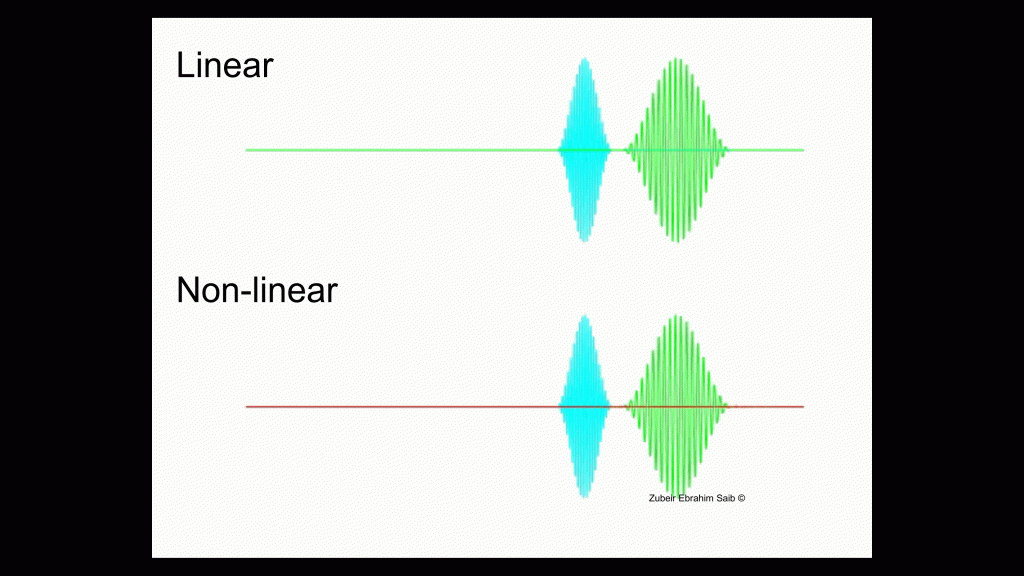One of the grand challenges in non-destructive testing (NDT) is the measurement of the remaining life of a structure. Up to now, most NDT methods aims to detect and characterise relatively large defects which occur at the end of the life of a structure using linear ultrasound.
Recently, potential use of non-linear ultrasound has been demonstrated in the literature to be sensitive to early formation of defects such as microcracks. This occurs because as material ages or become defective, they become increasingly non-linear. Different techniques have been developed, namely second harmonic generation, wave mixing, and diffuse field method. However, signals from non-linearity are relatively small compared to linear ultrasound, and hence can be easily masked by noise or other non-linearities. As a result, these techniques have not been fully exploited yet, due to them not having reached the required sensitivity to image the build-up of material non-linearity.
The project aims to develop the required modelling tool to fully understand the measurement scenario to exploit non-linear techniques, understand its limitations and potentially extract (or image) material non-linearity.

The technique I have been exploiting is the wave mixing technique. In this method, two primary waves (blue and green) are made to interact, and under some specific conditions, they will produce an additional wavefield, termed as the resonant wave (red). This wave can be related to the material non-linearity at the point of interaction, hence having the potential of spatial localisation.
Until now, a 2D numerical model has been successfully developed, and validated against theory for non-linear wave mixing. It has been used for the 1D mapping of non-linearity within material, showing that a correction factor has to be included to the equation from the literature relating the amplitude of the resonant wave to material non-linearity. The next step is to explore the potential of arrays for wave mixing.
